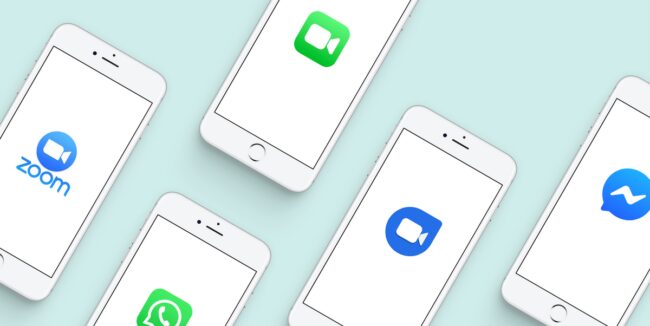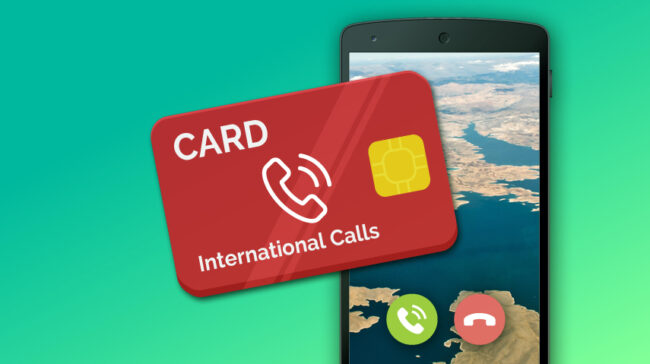International calling has many options
When it comes to international calling there are plenty of options available today, the explosion of online technology and created a massive communication umbrella which has given consumers so many different and affordable ways to talk to friends and family from overseas.
The most popular ways for people to connect with one another are:
VoIP voice and video calling including calling apps on both PC and mobile as well as International calling cards.
Calling apps

One of my favourite ways to communicate is via calling apps mostly using Facebook messenger but I have many different apps on my phone for calling up people in different locations around the world.
For example, WeChat for calling China, LINE for calling Japan, and KakaoTalk for calling South Korea.
If I’m travelling in thee countries and talking catching up with friends or connections then these are my go-to.
But in other parts of the world calling apps aren’t that user friendly.
For example, when I’m travelling to certain parts of Europe, Africa and south East Asia there are places that do have internet but it is unreliable so I end up using my mobile to call.
Pros and cons of international calling cards
The main pro of using an international calling card is that it will work well in both fully developed and developing countries, since they use traditional copper lines to connect calls. These are the exact same lines you would use if you are calling using either your mobile phone or landline.
This mean that you can use either your own landline or mobile phone to call to landlines and mobiles overseas.
Also, they are cheaper than using your existing mobile or landline calling plan, sometimes up to 90% cheaper in fact making them a fantastic all-round communication tool.
Another pro is that they don’t require a SIM card or any special setup you just need to dial into an access code, enter your PIN number and then dial the person you wish to speak to.
Some people may argue that it is a lot of hassle to go through just to make a call, for me personally the savings on international calls more than make up for the additional few digits you need to enter into your phone but there is a way you can automate this enter process by programming the entire call sequence into your mobile separated by a comma.
For example, calling Australia from NZ (New Zealand) would look something like this:
12345678,1234567890,0061212345678

NZ Phone Cards have a helpful guide giving specific examples on calling Australia from NZ and although they’re focusing on calling Australia from New Zealand you can use the same basic rules to call anywhere in the world, this is a nice and easy to consume step by step guide on how to call overseas plus they outline a trick where you can easily program in a series of numbers so you don’t need to key those numbers in manually.
For example, one of the “downsides” to using a calling card is the steps involved.
First you need to call the local access number, then enter in your PIN number then finally dial the overseas phone number.
For example: access number, PIN, overseas number.
This by the way is how I use my own calling card, instead of keying in 40 digits I just select my contact and tap the call icon and my phone runs through the whole process for me – brilliant!
But if you have a mobile phone you can just program in each of these steps followed by a ‘comma’ and your phone will run through them automatically.
One of the biggest downsides to using an international calling card comes from the industry itself, by this I mean you need to be a savvy shopper to avoid being ripped off.
With a calling app if you don’t like it you can uninstall it and move one but with a calling card you can get hit with fees that you are completely unaware of.
This means you could pay $10 for a calling card but only receive $6 worth of calls, so it’s important to ensure you do a little research before purchasing your next calling card.
Pros and cons of calling apps
The most attractive benefit for most consumers is that you can call or make video calls for free, this is a pretty tough proposition to beat but free will always come with some drawbacks.
The main issue with calling apps is that they require the internet and preferably a stable and reliable connection which means they’re mostly only good for the top tier countries like Australia, New Zealand, United States, Canada, China, Japan, South Africa, etc.
This is not good for developing countries.

There’s nothing more frustrating then trying to make a call and the person is lagging, so you are stepping over each other’s words and cutting them off as well as frozen video screens, etc. this is why I’ve become a massive fan of international calling cards, because they are simple to use, offer amazingly cheap rates and everyone I know or need to contact i.e. friends, family, accommodation, etc. has either a mobile or a landline.
Our recommendation
When I’m travelling I will of course have the free calling apps on my phone but the tech I rely on 80% of the time is the international calling card, it is super cheap to use and virtually everyone has access to a phone so I’m almost guaranteed to be able to reach anyone.
Like most things in life the things you pay for tend to offer the superior service.
Just make sure that you do your due diligence before purchasing a phone card, check for special fees, and make sure they have a customer service team.
Calling apps also offer paid calls, that offer similar rates to calling cards but for me calling cards are my top pick.
